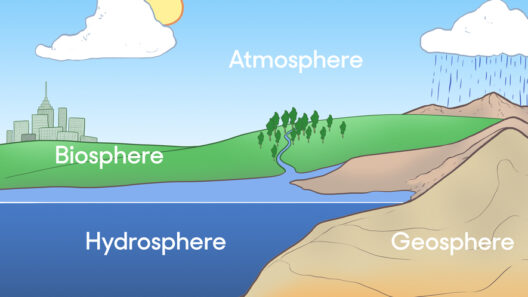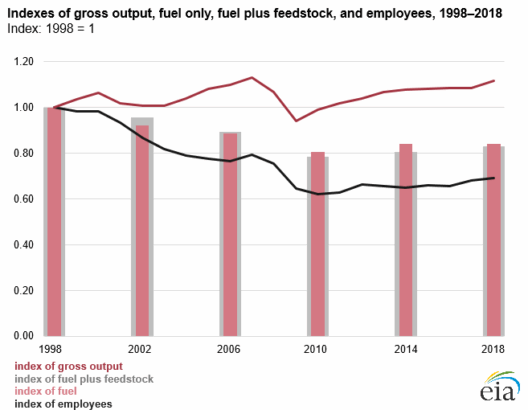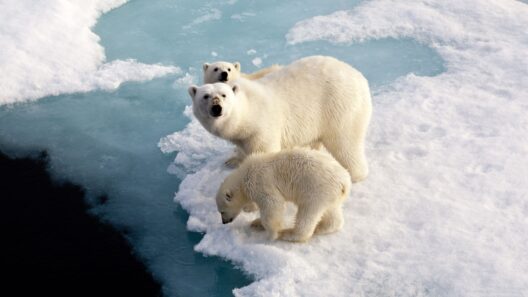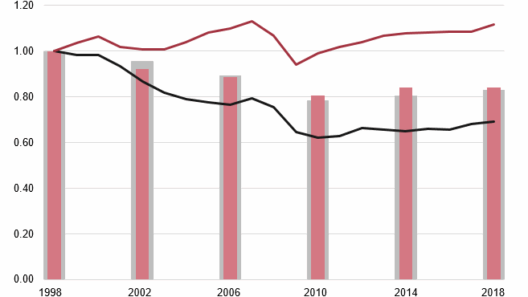Have you ever pondered what it would be like to walk along the beach, only to find that your feet are submerged in water where sandy shores once stretched? This unsettling imagery represents a reality that we face if global warming continues unabated. The accelerating rates of polar ice melt and the consequent rise in sea levels pose significant threats to our oceans—and to us. What can we do to mitigate this looming crisis? Let’s explore the multifaceted dimensions of melting ice and rising tides, understanding the science behind it and our ultimate role in combating this predicament.
The Earth’s climate is undergoing unprecedented changes, primarily attributed to the anthropogenic influence of fossil fuel combustion, deforestation, and industrial practices. This has led to an increase in atmospheric greenhouse gases, resulting in elevated global temperatures. Notably, the polar regions are warming at an alarming rate, with the Arctic experiencing temperature spikes that are nearly twice as fast as the global average. The melting of ice sheets in Greenland and Antarctica contributes to rising sea levels, which have the potential to inundate coastal communities and habitats.
When examining the mechanics of ice melt, it is vital to recognize the two primary contributors: thermal expansion and the influx of freshwater. As ocean temperatures rise, water expands. This phenomenon alone accounts for a substantial portion of observed sea-level rise. Simultaneously, the melting of colossal glaciers adds additional freshwater into our oceans, altering salinity and impacting marine ecosystems. Consequently, the delicate balance of marine life is disrupted, with effects cascading through food webs and affecting species diversity.
One of the most harrowing consequences of rising sea levels is the threat to coastal habitats such as mangroves, wetlands, and coral reefs. These ecosystems serve as critical buffers against storm surges and play a vital role in carbon sequestration. Their degradation not only exacerbates coastal erosion but also diminishes biodiversity. For example, coral reefs, often dubbed the “rainforests of the sea,” are under siege from climate-related stressors. As ocean temperatures rise and acidity increases, corals exhibit bleaching, which compromises the habitat for myriad marine species.
But the impact of rising tides extends beyond environmental degradation; it poses dire socio-economic challenges as well. Coastal communities, particularly in developing nations, are at heightened risk. These populations often rely heavily on coastal resources for their livelihood. With rising waters, we see the emergence of climate refugees—people forced to abandon their homes, thereby increasing competition for land and resources, and fueling tensions and conflicts.
While the challenges may seem insurmountable, there exists a call to action. The global community has begun to acknowledge the severity of climate change, exemplified by the Paris Agreement and various other initiatives aimed at limiting global warming to below 1.5 degrees Celsius. Transitioning to renewable energy sources, enhancing energy efficiency, and promoting sustainable practices can curtail emissions. However, individual actions are equally vital. What choices are you making in your daily life that can contribute to this global mission? From reducing waste to supporting eco-friendly companies, every action counts.
Moreover, investing in climate and ocean education can galvanize communities to advocate for policy changes. Local governments and organizations can implement adaptation strategies, such as constructing resilience infrastructure, restoring coastal ecosystems, and developing contingency plans. These measures not only help mitigate the effects of rising tides but also prepare communities for unforeseen circumstances posed by climate change.
A pivotal strategy for addressing rising sea levels lies within the power of reforestation and afforestation. Forested areas act as significant carbon sinks, absorbing CO2 from the atmosphere and slowing down climate change. Furthermore, reintroducing mangroves and marshes enhances coastal protection, acting as natural barriers against storm surges while providing habitats for countless species. It is essential to recognize the interconnectedness of these solutions; improving one area can have positive repercussions in others.
Policy prescriptions also play an instrumental role. Governments must commit to sustainable development goals that advocate for environmental health while promoting economic prosperity. Policy frameworks that prioritize climate adaptation and resilience are crucial for protecting vulnerable communities from the impending threats posed by rising sea levels.
In conclusion, the narrative of melting ice and rising tides is not just a tale of despair; it is a clarion call for action. As the ice caps recede, we have the opportunity to unite, transforming our collective apprehension into proactivity. The stakes are undoubtedly high; however, through cooperation, innovation, and education, we can turn the tide against global warming’s threat. Will you rise to the occasion and challenge yourself to make a difference today? The ocean waits for no one, and neither can its protectors afford to linger in complacency.







